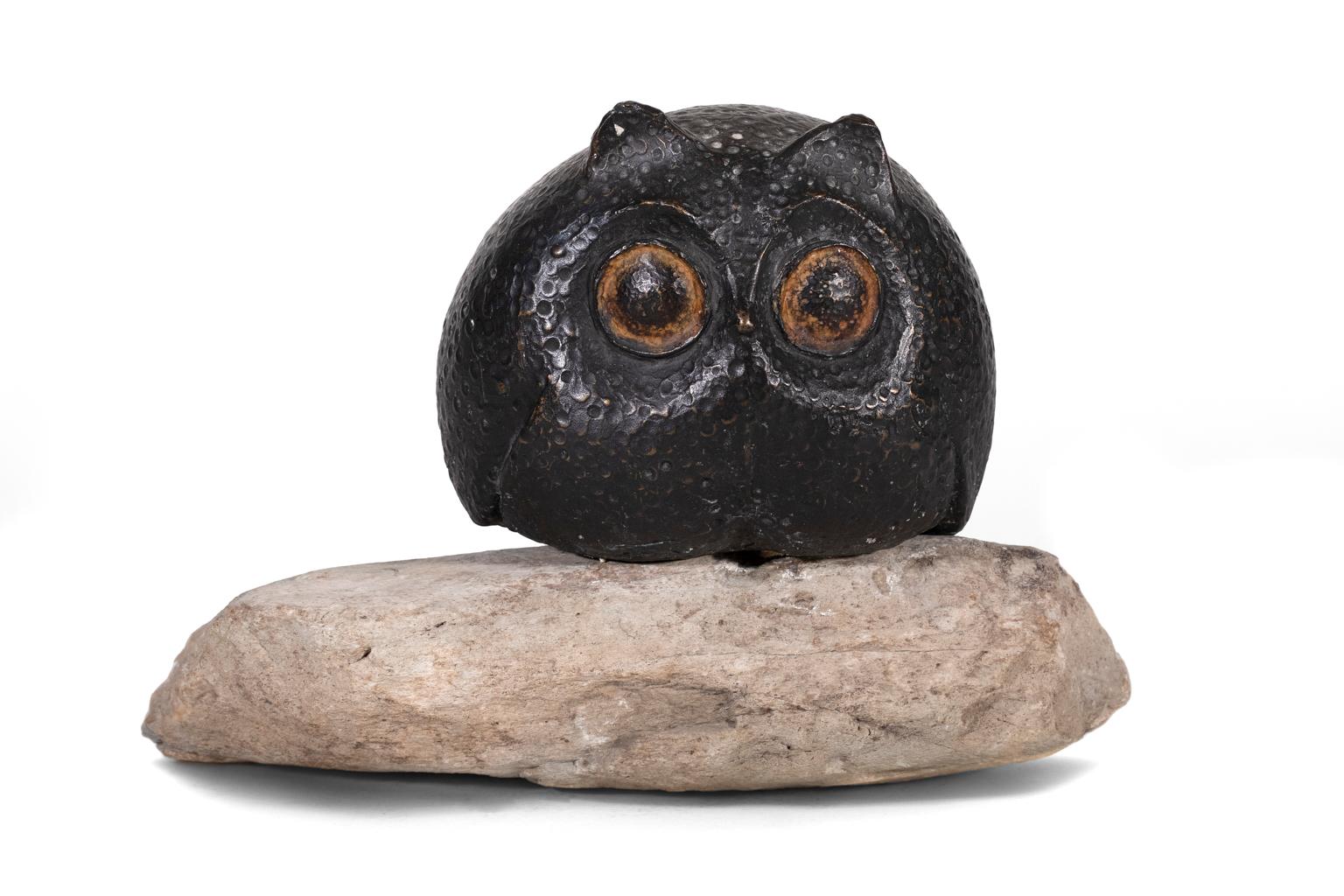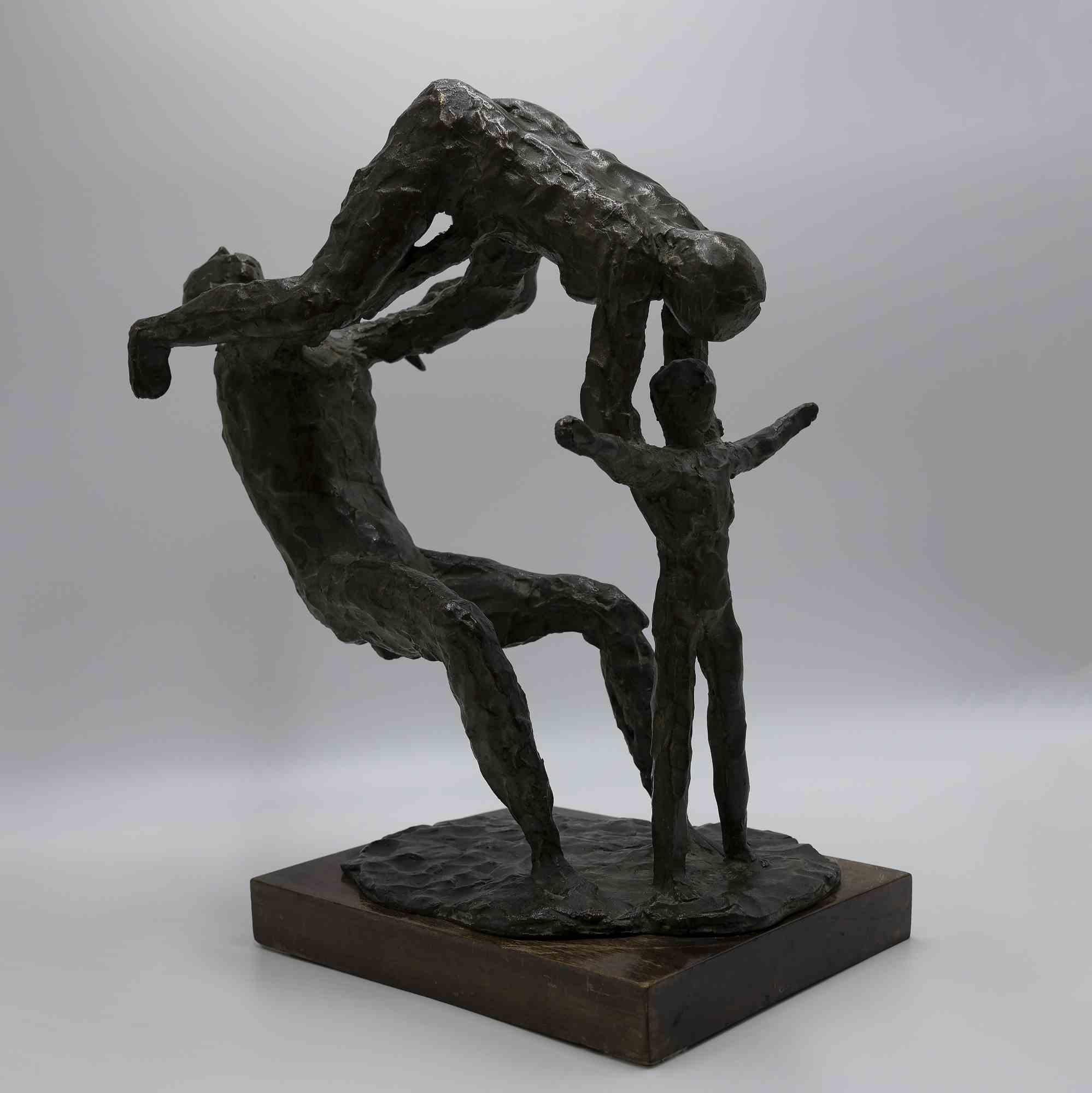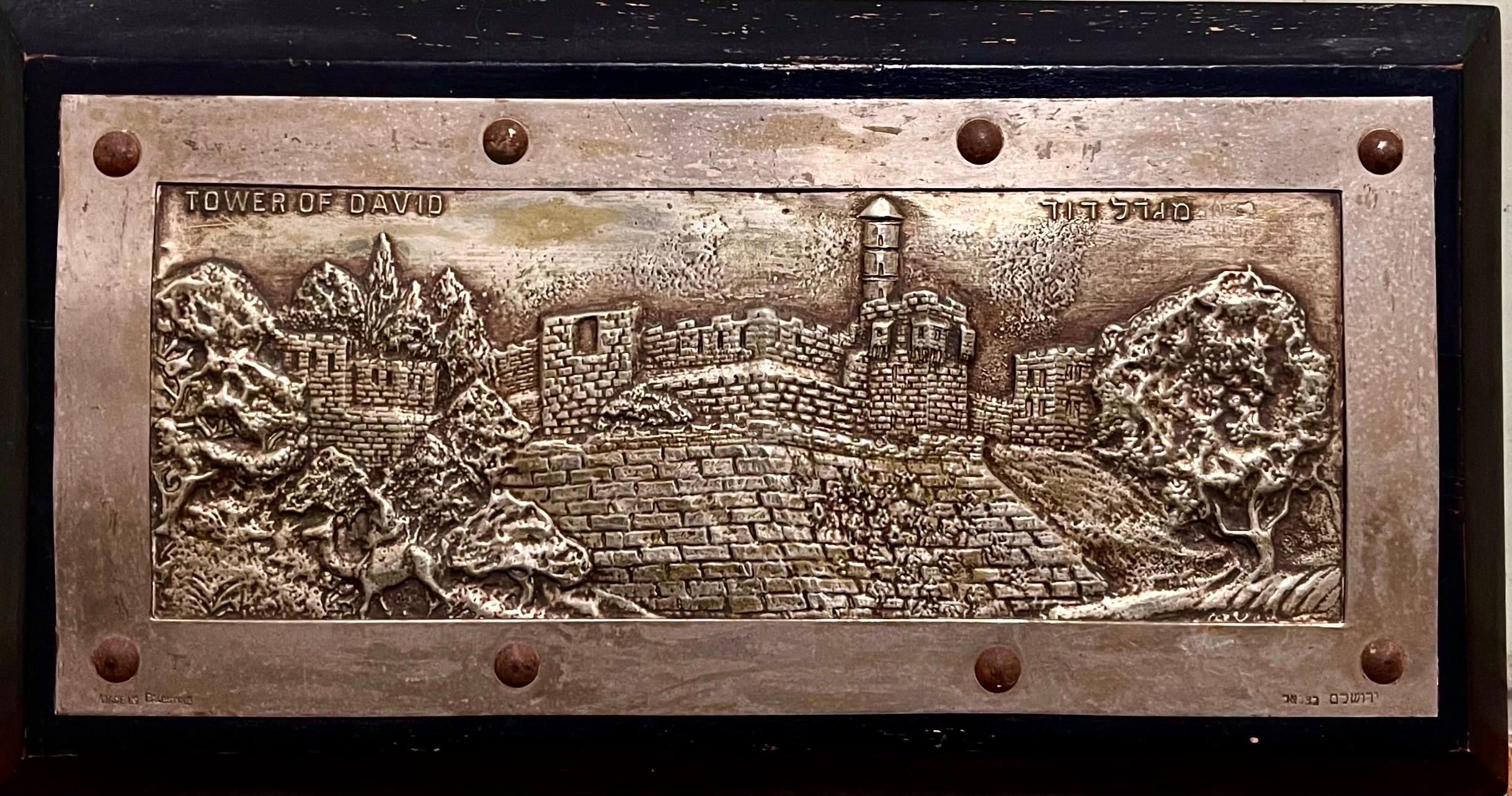Items Similar to Walk in The Garden
Want more images or videos?
Request additional images or videos from the seller
1 of 2
Ted GallWalk in The Garden2020
2020
About the Item
Original metal sculpture
- Creator:Ted Gall (American)
- Creation Year:2020
- Dimensions:Height: 15 in (38.1 cm)Width: 5 in (12.7 cm)Depth: 3.5 in (8.89 cm)
- Medium:
- Movement & Style:
- Period:
- Condition:
- Gallery Location:Santa Monica, CA
- Reference Number:1stDibs: LU1047113633012
About the Seller
5.0
Vetted Seller
These experienced sellers undergo a comprehensive evaluation by our team of in-house experts.
Established in 2009
1stDibs seller since 2018
177 sales on 1stDibs
Typical response time: <1 hour
- ShippingRetrieving quote...Ships From: Santa Monica, CA
- Return PolicyA return for this item may be initiated within 7 days of delivery.
More From This SellerView All
- Fingers StepLocated in Santa Monica, CABronzeCategory
21st Century and Contemporary Contemporary Sculptures
MaterialsBronze
- AfloatLocated in Santa Monica, CABronze sculpture, edition of 3.Category
2010s Figurative Sculptures
MaterialsBronze
- Sight Seeing in IstanbulLocated in Santa Monica, CABronze sculpture, variable edition of 4.Category
2010s Figurative Sculptures
MaterialsBronze
- Bird in the HandLocated in Santa Monica, CAEdition of 12.Category
2010s Figurative Sculptures
MaterialsBronze
- AngelLocated in Santa Monica, CAEdition of 6.Category
2010s Symbolist Figurative Sculptures
MaterialsBronze
- EntwinedLocated in Santa Monica, CAEdition of 6.Category
2010s Figurative Sculptures
MaterialsBronze
You May Also Like
- "Owl" Bronze Sculpture, Caricature, Rich Dark Brown SurfaceLocated in Detroit, MIThe bronze sculpture "Owl" is an exaggerated rendition of an owl that emphasizes the bird's most prominant characteristics - a big fluffy round body and large unblinking eyes making it a charicature of the bird. It is very touchable and calls for one to pet its rounded back. Tom Brun, the sculptor and zookeeper, is well-known for his wood, stone, marble, ceramics and ivory sculptures. One of them, a large hippopotamus, carved from walnut wood travelled the world in the State Department collection. It is said that Tom would often go into a house and pick up one of his sculptures and say that it was unfriendly – meaning that it had not been handled enough. Morley Driver has said of Brun in a newspaper article from the 1950’s “In Any Animal He Sees Beauty”: No one who has ever seen a Tom Brun hippopotamus will ever again think of it as ugly or ungainly, meaning that the artist not only gives you beauty but teaches you to see it. Tom has said: “Small pieces are like a proverb – a gem of meaning that one can dissect.” They are meant to be picked up, caressed and held. This owl, too, seems destined to be caressed. Brun was born in England in 1913. A few years after the end of World War I his father moved the family in 1919 to Detroit, Michigan. In 1935 at age 23, he officially became a U.S. citizen. He served in the army during World War II for five years and upon discharge and at the age of 36 took advantage of the GI Bill and applied for admission to Society of Arts and Crafts (now known as the College for Creative Studies) where he was gladly accepted. While at Arts and Crafts his instructors and established artists such as Sarkis Sarkisian, John P. Foster, Morris Brose, Richard Koslow, Patricia Burnett, Lloyd and Renee Radell...Category
Mid-20th Century Modern Figurative Sculptures
MaterialsBronze
- Large Chaim Gross Mid Century Mod Bronze Sculpture Circus Acrobats WPA ArtistBy Chaim GrossLocated in Surfside, FLChaim Gross (American, 1904-1991) Patinated cast bronze sculpture, Three Acrobats, signed mounted on black marble plinth 24.5"h x 14"w x 7"d (bronze alone) Chaim Gross (March 17, 1904 – May 5, 1991) was an American modernist sculptor and educator. Gross was born to a Jewish family in Austrian Galicia, in the village of Wolowa (now known as Mezhgorye, Ukraine), in the Carpathian Mountains. In 1911, his family moved to Kolomyia (which was annexed into the Ukrainian USSR in 1939 and became part of newly independent Ukraine in 1991). When World War I ended, Gross and brother Avrom-Leib went to Budapest to join their older siblings Sarah and Pinkas. Gross applied to and was accepted by the art academy in Budapest and studied under the painter Béla Uitz, though within a year a new regime under Miklos Horthy took over and attempted to expel all Jews and foreigners from the country. After being deported from Hungary, Gross began art studies at the Kunstgewerbeschule in Vienna, Austria shortly before immigrating to the United States in 1921. Gross's studies continued in the United States at the Beaux-Arts Institute of Design, where he studied with Elie Nadelman and others, and at the Art Students League of New York, with Robert Laurent. He also attended the Educational Alliance Art School, studying under Abbo Ostrowsky, at the same time as Moses Soyer and Peter Blume. In 1926 Gross began teaching at The Educational Alliance, and continued teaching there for the next 50 years. Louise Nevelson was among his students at the Alliance (in 1934), during the time she was transitioning from painting to sculpture. In the late 1920s and early 1930s he exhibited at the Salons of America exhibitions at the Anderson Galleries and, beginning in 1928, at the Whitney Studio Club. In 1929, Gross experimented with printmaking, and created an important group of 15 linocuts and lithographs of landscapes, New York City streets and parks, women in interiors, the circus, and vaudeville. The entire suite is now in the collection of the Philadelphia Museum of Art. Gross returned to the medium of printmaking in the 1960s, and produced approximately 200 works in the medium over the next two decades. For more than sixty years Chaim Gross's art has expressed optimistic, affirming themes, Judaica, balancing acrobats, cyclists, trapeze artists and mothers and children convey joyfulness, modernism, exuberance, love, and intimacy. This aspect of his work remained consistent with his Jewish Hasidic heritage, which teaches that only in his childlike happiness is man nearest to God. In March 1932 Gross had his first solo exhibition at Gallery 144 in New York City. For a short time they represented Gross, as well as his friends Milton Avery, Moses Soyer, Ahron Ben-Shmuel and others. Gross was primarily a practitioner of the direct carving method, with the majority of his work being carved from wood. Other direct carvers in early 20th-century American art include William Zorach, Jose de Creeft, and Robert Laurent. Works by Chaim Gross can be found in major museums and private collections throughout the United States, with substantial holdings (27 sculptures) at the Hirshhorn Museum and Sculpture Garden. A key work from this era, now at the Smithsonian American Art Museum, is the 1932 birds-eye maple Acrobatic Performers, which is also only one and one quarter inch thick. In 1933 Gross joined the government's PWAP (Public Works of Art Project), which transitioned into the WPA (Works Progress Administration), which Gross worked for later in the 1930s. Under these programs Gross taught and demonstrated art, made sculptures that were placed in schools and public colleges, made work for Federal buildings including the Federal Trade Commission Building, and for the France Overseas and Finnish Buildings at the 1939 New York World's Fair. Gross was also recognized during these years with a silver medal at the Exposition universelle de 1937 in Paris, and in 1942, with a purchase prize at the Metropolitan Museum of Art's "Artists for Victory" exhibition for his wood sculpture of famed circus performer Lillian Leitzel. In 1949 Gross sketched Chaim Weizmann, President of Israel, at several functions in New York City where Weizmann was speaking, Gross completed the bust in bronze later that year. Gross returned to Israel for three months in 1951 (the second of many trips there in the postwar years) to paint a series of 40 watercolors of life in various cities. This series was exhibited at the Jewish Museum (Manhattan) in 1953. In the 1950s Gross began to make more bronze sculptures alongside his wood and stone pieces, and in 1957 and 1959 he traveled to Rome to work with famed bronze foundries including the Nicci foundry. At the end of the decade Gross was working primarily in bronze which allowed him to create open forms, large-scale works and of course, multiple casts. Gross's large-scale bronze The Family, donated to New York City in 1991 in honor of Mayor Ed Koch, and installed at the Bleecker Street Park at 11th street, is now a fixture of Greenwich Village. In 1959, a survey of Gross's sculpture in wood, stone, and bronze was featured in the exhibit Four American Expressionists curated by Lloyd Goodrich at the Whitney Museum of American Art, with work by Abraham Rattner, Doris Caesar, and Karl Knaths. In 1976, a selection from Gross's important collection of historic African sculpture, formed since the late 1930s, was exhibited at the Worcester Art Museum in the show The Sculptor's Eye: The African Art Collection of Mr. and Mrs. Chaim Gross. Gross was elected into the National Academy of Design as an Associate member, and became a full Academician in 1981. In 1984, he was inducted into the American Academy of Arts and Letters, with Jacob Lawrence and Lukas Foss. In the fall of 1991, Allen Ginsberg gave an important tribute to Gross at the American Academy of Arts and Letters, which is published in their Proceedings. In 1994, Forum Gallery, which now represents the Chaim Gross estate, held a memorial exhibition featuring a sixty-year survey of Gross's work. Gross was a professor of printmaking and sculpture at both the Educational Alliance and the New School for Social Research in New York City, as well as at the Brooklyn Museum Art School, the MoMA art school, the Art Student's League and the New Art School (which Gross ran briefly with Alexander Dobkin...Category
Mid-20th Century American Modern Figurative Sculptures
MaterialsMarble, Bronze
- Cast Bronze Organic Husk Wall Mounted Abstract Textured Sculpture Seena DonnesonBy Seena DonnesonLocated in Surfside, FLThis is an abstract Flora based hand made, cast sculpture done by Seena Donneson an acclaimed woman artist. A textured abstract bronze with deep, rich patina; The sculpture is signed...Category
21st Century and Contemporary Modern Abstract Sculptures
MaterialsBronze
- Acrobat Family - Bronze Sculpture by Arturo Martini - 1936By Arturo MartiniLocated in Roma, ITAcrobat Family is an original artwork realized by Arturo Martini in 1936. Bronze sculpture with wooden base. Provenance: Pecci Blunt Collection. Published in the general catalogue...Category
1930s Modern Figurative Sculptures
MaterialsBronze
- Vintage Jerusalem Sculpture Wall Plaque 1930's Palestine Israeli Bezalel SchoolLocated in Surfside, FLRepousse sculptural plaque from the original Bezalel Art School in Jerusalem. This is marked "Made in Palestine" as it is from the British Mandate period. It is in an Orientalist design of the Tower of David. marked in Hebrew and English. Jerusalem's Bezalel School The Bezalel Academy of Arts and Design, was founded in 1906 by Boris Schatz. In 1903, Schatz met Theodore Herzl and became an ardent Zionist. At the Zionist Congress of 1905, he proposed the idea of an art school in the Yishuv (early Jewish settlements), and in 1906 he moved to Israel and founded the Bezalel School of Art in Jerusalem. Bezalel, which was a school for crafts as well as for graphic art, became successful very rapidly. Schatz’s vision was to develop useful arts and crafts among Palestinian Jews, thereby decreasing the dependence on charity. At the same time, he sought to inspire his students to create a Jewish national style of the arts, in order to promote the Zionist endeavor. The inhabitants of 19th-century Palestine, both Jewish and non-Jewish, had produced mostly folk art, ritual objects and olive-wood and shell-work souvenirs, as well as oil painting, sculpture, tapestry and mosaics. So the founding of Bezalel provided a professional and ideological framework for the arts and crafts in Jerusalem. The school employed workers and students, of whom there were 450 in 1913, in manufacturing, chiefly for export, decorative articles ranging from cane furniture, inlaid frames and ivory and wood carvings, to damascene and silver filigree and repousse work. A major part of Schatz’s school was the workshops, which, starting with rug-making and silversmithing, eventually offered 30 different crafts. Workshops included the "Menorah" workshop where they designed relief and souvenirs made of terra-Cotta, and the Sharar, Stanetsky and Alfred Salzmann workshops where Menorah lamps...Category
20th Century Modern More Art
MaterialsMetal
- Cast Bronze Organic Husk Wall Mounted Abstract Textured Sculpture Seena DonnesonBy Seena DonnesonLocated in Surfside, FLThis is an abstract Flora based hand made, cast sculpture done by Seena Donneson an acclaimed woman artist. A textured abstract bronze with deep, rich patina; The sculpture is signed...Category
21st Century and Contemporary Modern Abstract Sculptures
MaterialsBronze





